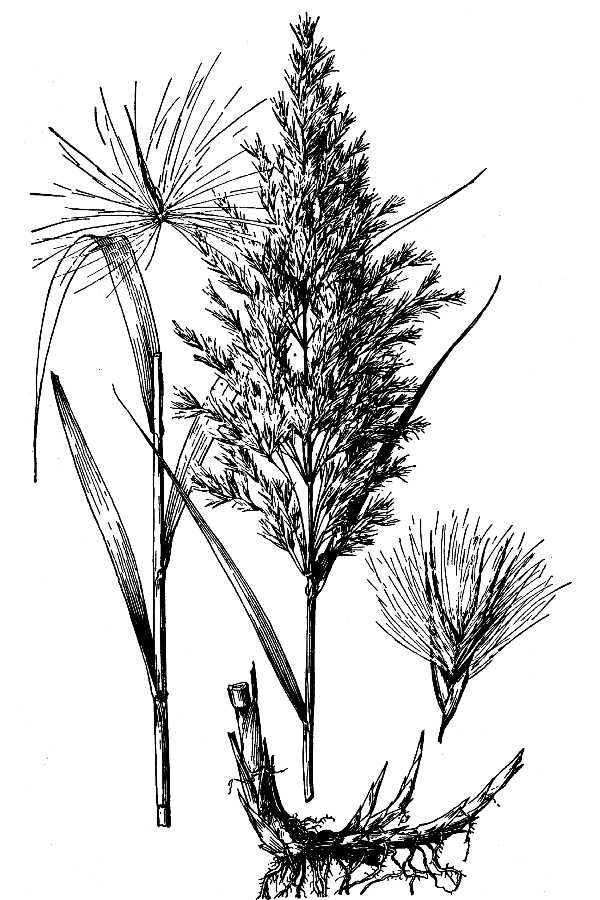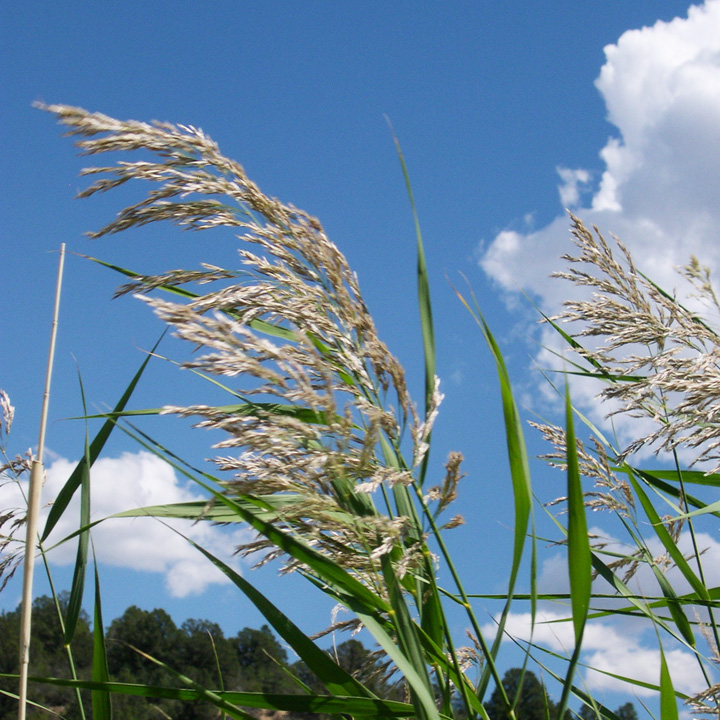|
|
 Plant USDA-NRCS PLANTS Database / Hitchcock, A.S. (rev. A. Chase). 1950. Manual of the grasses of the United States. USDA Miscellaneous Publication No. 200. Washington, DC. |  Seedhead Max Licher @http://swbiodiversity.org, Usage Rights: Creative Commons Attribution-ShareAlike (CC BY-SA) | | | | |
|
| | |
Origin: Introduced Season: Warm
Habitat Description: Found in wet or muddy ground along streams, ditches, in marshes, and at the edges of lakes and ponds.
Plant Communities:Riparian, Disturbed Areas
Elevation: Below 6000 feet
Similar Species: Arundo sp.
Desc:
Stout erect rhizomatous and stoloniferous perennial, often forming dense stands. Stems are up to 20 feet tall and branch above the base of the plant and at stem nodes. Stems are tan in color and ridged or ribbed.
Identification Notes: Differs from Arundo sp. in having wedge-shaped light to dark brown areas at base of blades. Perennials up to 13 feet tall with broad blades and large terminal plumose seedheads and several flowered spikelets.
Grass Type: Perennial bunchgrass Rhizomes: Y Stolons: Y
Large Dense Clump (> 2 feet): Y Bushy (highly branched): Y
Height with Seedheads: Greater than 36 inches
Seedhead Structure: Branched - open and spreading Seedhead Droops: Y
Flowering Period: Jul - Sep
Number of Flowers per Spikelet: Multi-flowered Spikelets One-sided: N
Awns: Absent Three Awns: N Awns Bent: N
Flower and Seedhead Notes: Seedheads spreading, bushy, egg shaped, usually purple or golden in color, up to 20 inches long. Spikelets have 3 to 10 florets that appear gray at maturity due to the growth of long, silky hairs from each spikelet. Lemma tips long, taper to sharp point.
Blade Hairy:
N
Blade with White Margins:
N
Blade Cross section:
Flat or folded
Blade Notes:
Bluish-green blades are smooth, up to 2 feet long by 1-1/4 inches wide with pointed tips, and are flat or folded.
Sheath Hairy:
N
Tuft of Hairs at top of Sheath or Collar:
N
Ligules:
Membranous and hairy
Auricles (Ear-like lobes at collar area:
N
Forage Value:
Young plants of common reed are considered very palatable and are readily grazed by sheep and cattle. Mature plants are tough and
unpalatable to livestock and wildlife.
|
|